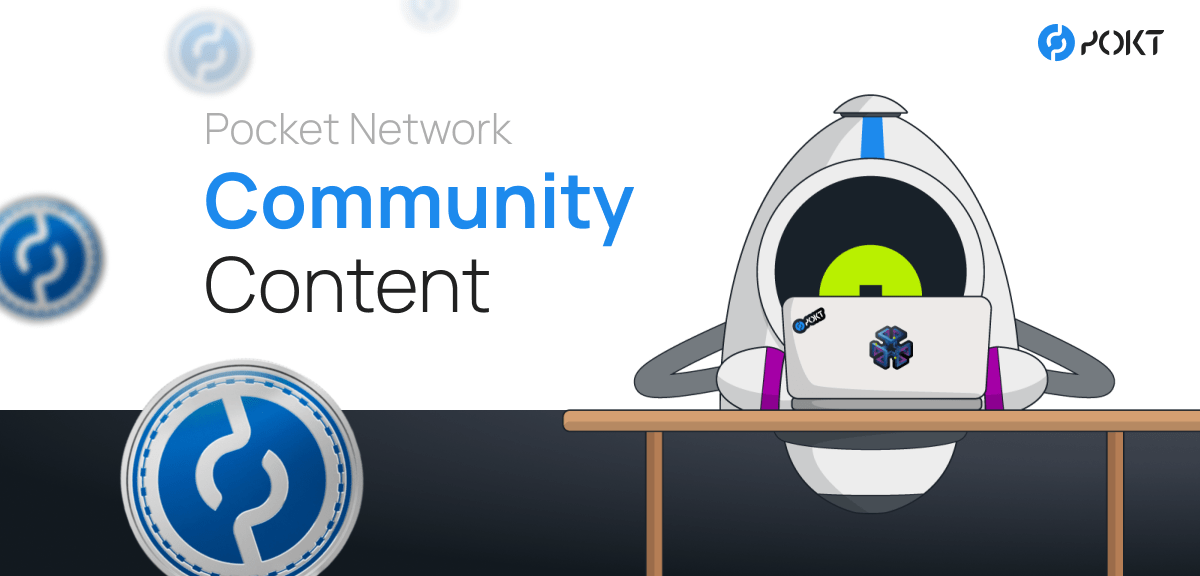Ramping Up POKT Network’s Gateway Strategy with the Announcement of 3 New Gateways
Announcing 3 new Gateways to POKT Network, doubling the number of gateways and ramping up demand-side decentralization.

Pocket Network is a decentralized web3 infrastructure protocol that enables the development and deployment of decentralized applications (dApps) across multiple blockchains. By connecting developers to more than 21,000 nodes worldwide, Pocket Network ensures a highly scalable, high-performance, and cost-efficient environment for your dApps, without compromising on security or reliability.
Pocket Network serves as a bridge for developers from a blockchain to the data their end users need. The network is blockchain-agnostic and supports more than 40 chains, including Ethereum, Polygon, Avalanche, Arbitrum, and dozens more. This flexibility allows developers to focus on building innovative and feature-rich dApps without being tied down to a specific blockchain and worrying about issues like: performance, cost, and reliability (we call this the RPC Trilemma).
Learn More About Pocket Network's Protocol
In this tutorial, we will walk you through how to build a dApp on Pocket Network. We will use Node.js and the Web3.js library to interact with the network, and we will also demonstrate how to use Pocket Network's monitoring tools to track the performance of our dApp.
The Pocket Portal account will allow you to set up an application and an endpoint - these credentials will be used in the steps below. It's easy to set up your own private endpoint with Pocket. Just head over to the Pocket Portal and:
You can also see a video walkthrough of minting an endpoint in the Pocket Portal below.
https://youtu.be/7kKf6o6QGtg
After these steps, you’ll be set up with your own application and private endpoint, and be ready to progress through the rest of the tutorial and learn how to build a dApp. If you want to dig in to pocket-core (the official implementation of the Pocket Network protocol) and learn more about the SDKs for interacting with Pocket in more detail, head to our GitHub and our SDK Docs.
First, create a new directory for your project and navigate to it in your terminal. Then, initialize a new Node.js project by running the following command:
npm init
Follow the prompts to set up your project and install the necessary dependencies:
npm install --save web3 pocket-js
The web3 package will allow us to interact with the Pocket Network, while the pocket-js package provides us with monitoring tools to track the performance of our dApp.
Next, we need to connect to Pocket Network using our account credentials. In your index.js file, add the following code:
const Pocket = require('pocket-js')
const Web3 = require('web3')
const pocket = new Pocket([
{
"rpcUrl": "https://eth-mainnet.gateway.pokt.network/v1/lb/mainnet/0x0001",
"pocketAAT": {
"version": "0.0.1",
"clientPublicKey": "<YOUR CLIENT PUBLIC KEY HERE>",
"applicationPublicKey": "<YOUR APP PUBLIC KEY HERE>",
"applicationSignature": "<YOUR APP SIGNATURE HERE>"
}
}
])
const web3 = new Web3(pocket)
Replace the placeholders in the pocketAAT object with your actual Pocket Network credentials. This code creates a new Pocket object and a new Web3 object, which we will use to interact with the network.
Now that we're connected to Pocket Network, we can make requests for data. For example, let's retrieve the balance of an Ethereum address:
const address = "0x1234567890123456789012345678901234567890"
web3.eth.getBalance(address, (err, result) => {
if (err) {
console.error(err)
} else {
console.log(`Balance of ${address}: ${web3.utils.fromWei(result, 'ether')} ETH`)
}
})
Replace the address variable with an actual Ethereum address. This code retrieves the balance of the address and logs it to the console.
View the Pocket Network API Docs
Finally, let's use Pocket Network's monitoring tools to track the performance of our dApp. Add the following code to your index.js file:
pocket.getStats((err, result) => {
if (err) {
console.error(err)
} else {
console.log(`Network stats: ${JSON.stringify(result)}`)
}
})
This code retrieves the current network statistics and logs them to the console.
To run your dApp, simply run the following command in your terminal:
node index.js
You should see the balance of the Ethereum address and the network statistics logged to your console.
Now you’re equipped to build a dApp on Pocket Network using Node.js and Web3.js. We've covered the process of connecting to the network, making data requests, and utilizing Pocket Network's monitoring tools to track your DApp's performance.
Now you're ready to create powerful decentralized applications and take advantage of Pocket Network's reliable, performant, and cost-effective decentralized RPC service.
Happy building!